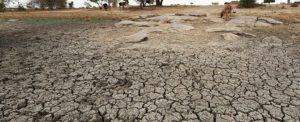WHO–WMO report Climate Change and Workplace Heat Stress (2025):

The WHO–WMO report Climate Change and Workplace Heat Stress (2025) highlights how rising global temperatures are creating a severe occupational health and productivity crisis. With 2024 the warmest year on record (1.45°C above pre-industrial levels), both outdoor and indoor workers face growing risks.
Key Findings of the WHO–WMO Report:
- Productivity Losses – Each 1°C rise in WBGT above 20°C reduces productivity by 2–3%; sun exposure adds another 2–3°C
- Scale of Exposure – Over 4 billion workers affected; annually 22.85 million injuries, 18,970 deaths, and 2.09 million DALYs linked to heat stress.
- Geographical Hotspots – 30% of the world’s population faces heat stress as an everyday or seasonal problem, with South Asia, Middle East, and Sub-Saharan Africa worst hit.
- Health Impacts – Over one-third of workers in hot conditions report physiological heat strain. WHO guidance (1969) states that core body temperature should not exceed 38°C during an 8-hour shift, but this is increasingly breached.
- Climate Change Dimension – 40–50°C daytime peaks now frequent, spreading risks beyond tropics; worker fatalities recorded in Europe’s 2023 heatwaves.




